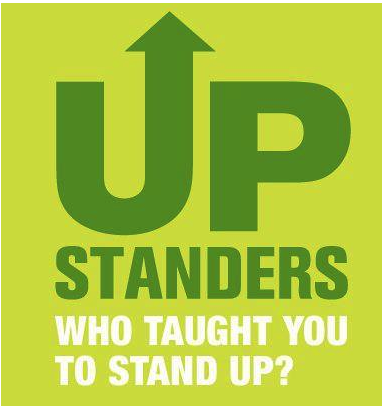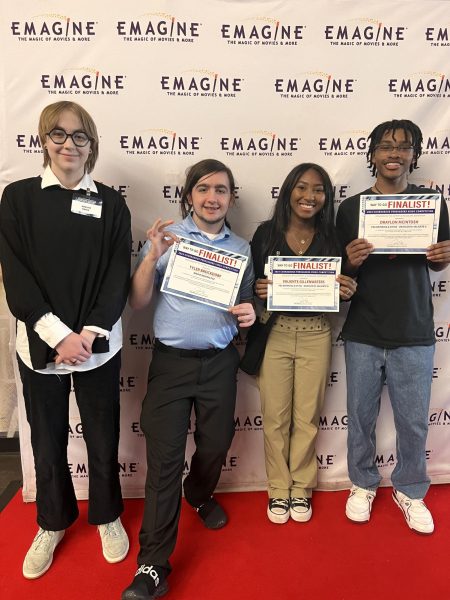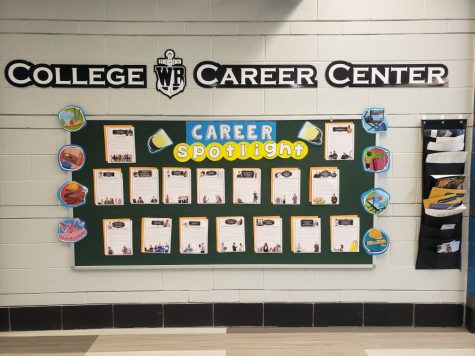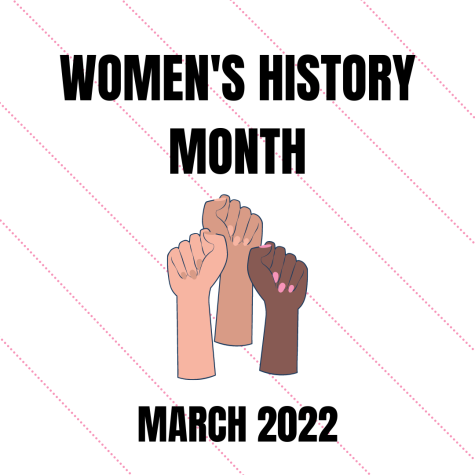Stand Up to Bullies
The West Bloomfield High School (WBHS) Upstander Program Stands Up to Bullying in Schools

Bullying is a problem that many people have experienced. Upstander, an anti-bullying organization in schools throughout the country, uses the R.A.P. definition (Repeated behavior, An imbalance of power, Purposefully trying to cause harm) to define what bullying is. Any situation that falls within the R.A.P. defintion is considered bullying in Upstander. Intervening in a situation can be difficult. If one is being bullied or if one is a quiet bystander, there are things they can learn to resolve a bullying situation. A great way to learn to stand up to bullies is with the program Upstander at West Bloomfield High School (WBHS). Upstander is run by Kathleen Sullivan, of Defeat the Label, and WBHS teacher Marlowe B’sheart.
Upstander is a program used in multiple schools to teach students the skills on how to stand up to bullying. Sullivan said, “The overall goal of the Upstander Program is to bring the issues of bullying to the forefront of the student’s social consciousness through empowerment and self-reflection.” All types of students participate in the program. Sullivan said, “As far as my understanding goes, there were some students that signed up to be a part of the program because they felt as though stereotypes, judgments and bullying is a problem.” According to Sullivan, however, the big picture of the program is to teach students to act when one sees a bullying incident occur.
As for the core ideals of the program, Taylor Grier, a sophomore at WBHS said, “We have discussions about human nature and what the origins of our actions are.” Jonathan Zhang, a freshman at WBHS, said, “The most important thing about Upstander to me is learning about acceptance and accepting other people for who they are.” Students involved with Upstander play various games throughout the program to help them understand bullying and what they can do to stand up to bullies. Grier said, “Most of the members of Upstander participate in activities such as acting out bullying scenarios, allowing them to figure out their roles in the situations. They also play various games, one being cross the line.” There is also a project that students must complete during the last couple of weeks of the program that takes lots of time and creativity.
During the last month and a half of the program, students use their knowledge about bullying and standing up to bullies to create various projects that reach out to people and teach them how to be an Upstander. By allowing students to create real-life examples of bullying, or interviewing people about their past experiences, students are empowered with a new outlook on how to prevent bullying at its core. Grace Trivax, a freshman at WBHS is working with a group to create a public service announcement to reach out to fellow students about bullying hoping to convey the message, “If you want change, it can be arranged. Just stand up,” captures the essence of the Upstander program. These projects will be displayed during Upstander Week, which is the week of May 4th.
Being a teenager in today’s world is difficult on many levels. The stress of school, social life, and the planning for the future make for a tough combination. On top of all of these stressors, bullying is the last thing teenagers want to deal with, yet it occurs every day at middle schools and high schools. Upstander teaches students not only how to deal with bullies, but how to prevent the act of bullying as well. “[Upstander] teaches us that we all share similar difficulties as humans” says Grier. The phenomena of the “me-first” culture has hit teenagers hard and being able to understand another individual’s problems is proving more and more a difficulty. Through Upstander, the vanity coat of society is shed and students learn not just how to prevent bullying in their school but in their communities as well. Upstanders are agents of positive change for the world, whose mission is to not only stop bullying by stomping it out but exploring what causes it and how society as a whole can prevent it altogether.
Your donation will support the student journalists of West Bloomfield High School. Your contribution will allow us to purchase equipment and cover our annual website hosting costs.












Madison Ruiz • May 4, 2015 at 10:08 am
Great Article, I would definitely love to join Upstander. Bullying is a big problem in our society and it is great to know that people are taking a stand, and trying to fix it. This article gave me a better insight on what upstander is, and i hope to be apart of it next year !! 🙂